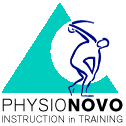Neurodynamic
Neurodynamic - How real is the therapeutic stretching of peripher nerves?
Part III - How useful is Neurodynamics for research and therapy?
Neurodynamics refers to the connection between different structures of the peripheral nervous system and to the relationship between the nervous system and the locomotor apparatus. The term Neurodynamics was introduced in the 1980s and is now regarded by doctors and paramedics as an important part of the diagnosis and therapy of musculoskeletal injuries with the main symptom of (radiating) pain. Neurodynamics is based on the hypothetical model of neuropathic pain due to nerve damage caused by shortening and entrapment (spinal irritation or nerve root compression). Following on from this, the French neurologist Lasègue developed the pain-provoking stretch tests for the N. Ischiadicus. Stretching of an irritated nerve would provoke pain and thus diagnose nerve root compression..
The aim of neurodynamics is to influence this pain through mobilisation of these peripheral neural tissues and their surrounding non-neural structures with the aim of promoting and/or restoring function. To date, scientific proof for this view has not been provided.
During movement, pluriform tensions and movements are exerted on nerve fibres. This leads to function-enhancing reactions such as neural gliding, pressure build-up, stretching, tension, and changes in intraneural microcirculation, axonal transport and impulse conduction as long as the movements do not exceed the limits of the physiological range of nerve fibres. Even extreme movements such as those seen in (top) sport do not exceed these limits. Nerve fibres are therefore long enough not to be overstretched during extreme movements. Other (facial) structures prevent neural tissue from being overstretched.
Nerve tissue is vulnerable and damage leads to irreparable damage. For this reason, it is located on the inside of the arms and legs under/between the muscles or even on the bone. In this way, they are protected from external traumatising influences.
The high vulnerability is also shown by the low mechanical load-bearing capacity when stretched or compressed. An sciatic nerve from a hamster showed no change in the compound motor action potential (CMAP) after mechanical compression to 370 mm Hg (= 0.049 N/mm² = 4.9 N/cm2), at 1000 mm Hg the amplitude of the action potential decreased by 50% and at 1470 mmHg by 60%. The nerve conduction velocity decreased by only 5 %. Only with a significant reduction of the action potential by 80% (at 2000 mm Hg) did the conduction velocity decrease by 30-50% (56).
Compression with a weight of 60 g/mm2 (corresponding to 46 mm Hg) led to complete paralysis of the sciatic nerve in rats but recovered completely after 14 days (44).
The sensitivity of a nerve to stretching is shown by an experimental set-up in which the stretching load of the sciatic nerve of a hamster is tested. At an average strain of 73 g (0.73 N) the CMAP disappeared completely; at an average strain of 331 g (3.3 N) the nerve physically broke (57).
In human nerve tissue of the brachial plexus, loss of function already occurs at a stretching force between 365 N and 804 N (65). Many other researchers come to similar results.
It is therefore quite understandable that nerves are extremely well protected against meschanic pressure or stretching forces. The provocative pain that occurs, for example, in the Spurling test for compression of cervical nerve roots can rather be explained by stimulation of nociceptors in the ligamentous structures around the facet joint. The pain elicited by the Upper Limb Neural Test and the Arm Squeeze Test, among others, is more likely to be caused by stimulation of nociceptors abundant in the deeper fascial tissue.
Using the nociceptive concept as an explanatory model for radiating pain leads to quite different conclusions than using the hypothetical concept of neuropathic pain as an explanatory model.






